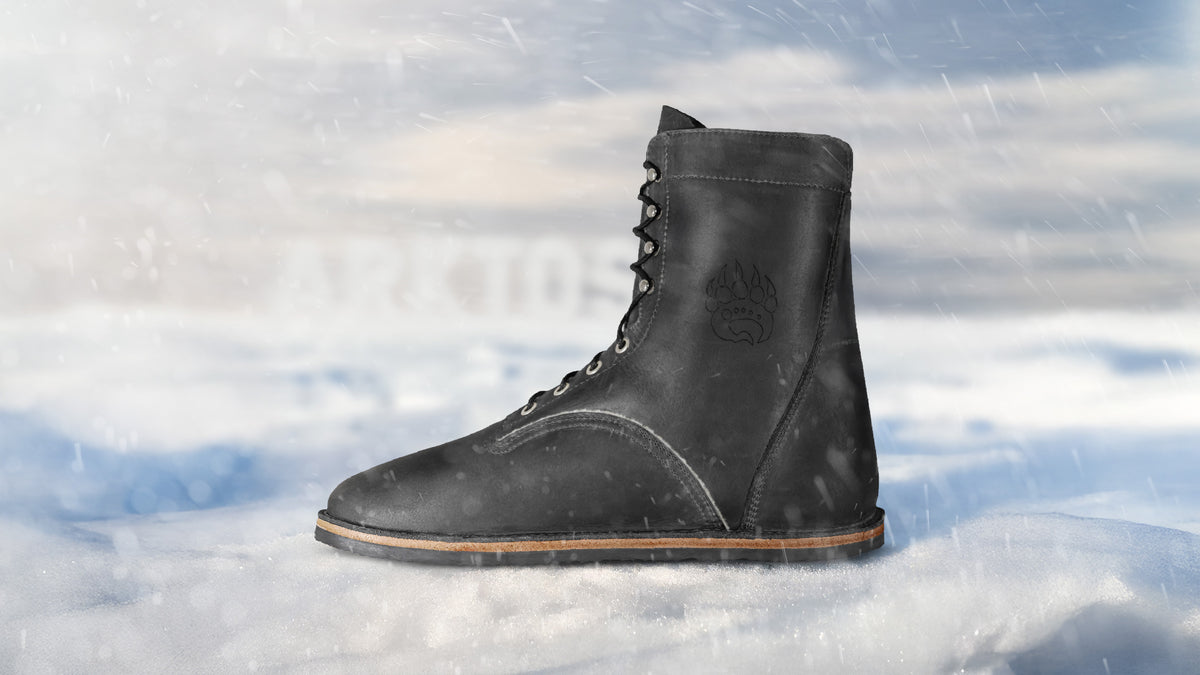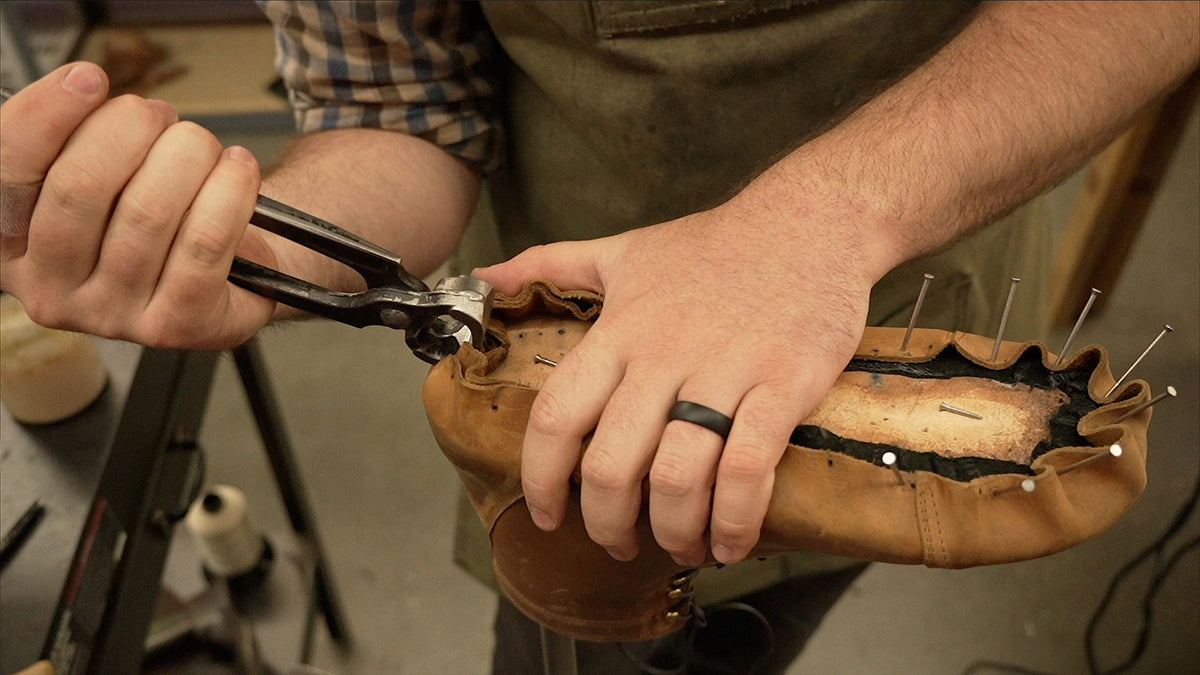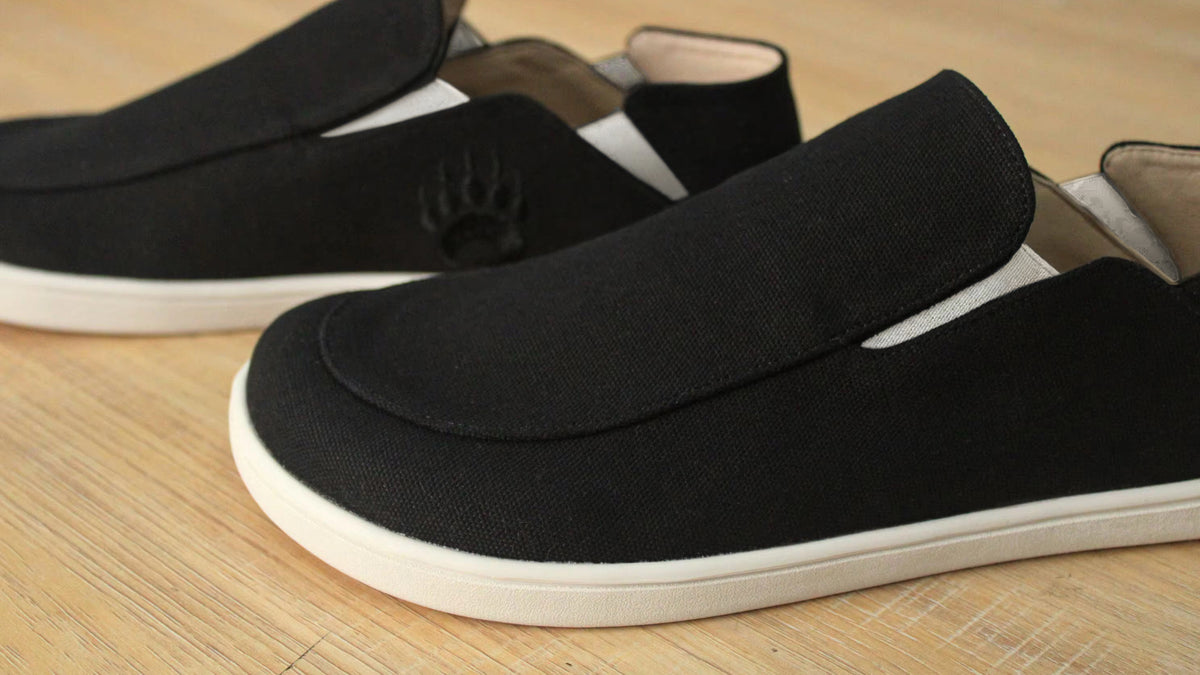How to Transition to Barefoot Shoes: A Research-Based Guide
Written by: John Baker and Lily Hoog-Fry
Going Barefoot Doesn't Have to be Hard:
If you’ve been following us or are reading this, you are probably at least somewhat aware of the many benefits of barefoot shoes and the side effects that conventional shoes can cause for your whole body.
Transitioning to barefoot shoes can be intimidating… you’ve invested money into your footwear collection over your lifetime, and switching to barefoot can feel like admitting you made a poor investment. Although replacing your traditional shoes is expensive, there’s more to the transition than just buying something new.
Our goal here is to familiarize you with all the non-financial aspects of transitioning to barefoot shoes. After reading this article, you’ll be much more confident in your ability to properly and safely transition from conventional to minimalist footwear.
What’s the Big Deal?
Although there are many benefits from minimalist footwear and going barefoot (read any of our articles yet?), there is the risk of developing foot pains and aches while transitioning from regular shoes to barefoot shoes for the first time. Often the cause of this discomfort comes from transitioning to minimalist footwear too fast and aggressively, as your tissues have adapted to your old shoes that you’ve worn your entire life.
Your foot muscles have gotten used to the features of everyday shoes, such as a thicker sole, narrow toe box, and arch support. You need a careful transition period where you address all of the foot problems your regular, 'supportive' shoes have created for your overall foot health.
It is essential to understand that if you have a dysfunctional foot, it will not be instantly fixed simply by removing your shoes. We like to believe that barefoot is the answer, but it is just one piece of a healthy transition to a more muscular, functional foot.
The hard truth is that many of us have spent years ignoring our feet and mending that relationship isn’t going to happen overnight by something we get in the mail. In the long run, going barefoot will allow your foot to move more naturally, but it will also expose the weakness conventional shoes have covered up for years.
What's a Safe Transition Time?
The key to transitioning is to do so gradually and stepwise. You must treat this like any other corrective exercise – start conservatively with an amount you can handle and progressively increase exposure over time as the tissues adapt. You wouldn’t walk into the gym and immediately try to deadlift 500 lbs, so why would it make sense to be all barefoot all the time immediately? The literature is still in its infancy regarding this topic. Still, based on the research available, “the transition timeline is, certainly, an individual response that cannot and should not be universalized from a cross-sectional study (1).”
With this in mind, we can only make general recommendations and suggestions rather than provide you with an exact program to follow. Nevertheless, the general goals governing your attack plan will remain the same.
First, we want to facilitate our tissues' ability to achieve natural resting positions via soft tissue/myofacial drills.
Once the tissue is loose and better aligned, we want to move and load said tissue with our foot and ankle-specific mobility exercises, so that our body can adapt and lay down some new muscle and other tissue to help us stay in those better positions.
Lastly, we challenge your new and improved feet in total body movement – I know you're thinking max squats – but to have a smooth transition, we encourage walking because it has a much better risk-reward ratio at this initial stage of the change, plus it will both strengthen and stretch the muscles of the foot and calf. We want to ease our way into those heavy AF barefoot PR’s (you’ll get there, but just chill for a second here Hulk).
Read on for a well-formulated guideline to chart your course to barefoot living!
The Best Way to Start:
The unfortunate truth is that if we aren’t able to recruit all the little muscles in our feet to help us move (because we forgot they exist, can you lift your big toe only? I didn’t think so), we are compromised and degraded our other support structures (think ligaments and fascia) using non-minimal shoes through our lives.
If you’ve worn conventional footwear for some time, I’d be willing to bet that you know that your foot is a bit deformed by this point (think bunions, crossing toes, etc.). You also might have some other issues like chronic foot pain, sore feet, and tight calves. This is common, although far from normal, and is the first thing you must address before you expose your bare feet to the world.
Barefoot movement is FANTASTIC, but like any exercise, we want to ensure solid form and alignment. A good example here is how driving on misaligned tires is not only bad for the tires, but also your car’s fuel economy, lifespan, and handling.
The main goal here is facilitating movement and mobility in all the structures of the foot that have previously been bound and restricted by a lifetime of wearing conventional footwear.
Simply put, we will mash and bash the soft tissues of the foot and calf to break down the rigidity created by decades of restrictive shoes, so you have more natural movement over time.
We can do this with a variety of different methods. Some of our favorites include:
- Rolling Out the Sole of Your Foot with a Hard Ball – In general, if you aren’t used to doing this, we recommend you start with a softer and larger ball, like a tennis ball or lacrosse ball. Then, progressively move towards harder and smaller balls like the one we sell HERE, which are smaller and have a textured surface for enhanced neural stimulation.
- The goal here is to help loosen any adhesions and tissue that is too tight within the foot itself. As we mentioned earlier, if the tissues are too tight, the foot won’t be able to relax into a more natural shape.
- Calf Rolling – A lot of the tendons that attach to our feet are just extensions of muscles that start in the calf! You can use any size foam roller for this, although you really just need one that is large enough for you calf to fit on it
- Try rolling your calf in different places – roll the outside, back, inside, and front. Variety is the spice of life!
- The goal here is the same as rolling out the bottom of the feet. However, the muscles that begin in the calf and attach along the foot will also affect ankle positioning.
- Calf Stretching – You stretch different muscles when your knee is bent versus straight, so do both!
- Our favorite way is on a half-foam roller (best calf stretch ever).
- If you’re lucky enough to have a Blackboard then you can get really funky with it! Play around with where the long and short bars are to tailor the equipment for the perfect stretch for you!
- The goal is to find where you feel tight in a variety of different positions and stretch those out so the foot has room to move naturally down below!
- Foot Love – Stick your finger between your toes and get your lovin’ on!
- Stick your fingers between your toes and gently mobilize the foot by moving your hand/wrist… flexing and extending the toes… turn your foot in and out… etc
The Important Role of Tissue Tone and Length:
After getting things to align better, we need to improve the tissue strength to help keep us in alignment. We want to drive this message home – you must do BOTH your soft tissue work and strengthening work if you want your transition to barefoot shoes to be optimal.
- Short Foot – In this exercise, you want to try and lift the arch (think trying to do the cat-cow yoga move but with the arch of your foot) while keeping the forefoot and heel planted on the floor. Here we are learning to recruit and contract the intrinsic muscles of the foot, which need to share the load with the super strong connective tissue that covers the bottom of our foot (plantar fascia). Otherwise, when the plantar fascia has to support your body all day, you end up degenerating that fascia, which is called ‘plantar fasciitis’ (or the bottom of your foot and heel being constantly sore with a sharp stabbing quality – note that the plantar fascia only cover the bottom of the foot, so pain elsewhere is likely something else).
- The goal is to do this while allowing your toes to stay relaxed.
- It may not be possible to keep your toes relaxed and lift/squeeze your arch yet, but this is fine, and now you have something to work towards.
- Toe Extensions – This is as simple as it sounds… just lift those bad boys as high as you can while keeping the ball of your foot down, progressively working toward lifting them higher and higher.
- Pro Tip: Try to practice isolating each toe (or realistically several toes at a time) rather than all of them at once for improved mastery (it’s hard huh?! These are the muscles that need to be under your conscious control before you take away the external supports (shoes) that your foot has been in enveloped in for decades)
- Toe Spreading – Place your foot on the ground, relax your body, and try to spread your toes out wide as far as you can (moving the big toe toward the opposite foot – reach the right big toe to the left, and the left big toe to the right – it’s a tricky one, but don’t skip it!), hold, return to the start, and repeat.
- Single Leg Balance – Focus on keeping your weight balanced on your tripod foot (Don’t know what this is? We have a blog coming soon but essentially evenly dispersing your weight over the base of your big toe, the base of your little toe, and your heel) this exercise is great because it will help you learn to incorporate your ‘new’ feet into normal movements (like squatting down to play with your kid, walking your dog, lifting heavy things up and down, etc.)
Strengthen Your Foot Through Progressive Overload:
Please remember that despite the same exercises, your journey and experience are unique. Start small with these exercises. We suggest starting with minimal work and increasing it over time. Doing 30 seconds of each soft-tissue drill 1x daily (we like doing it while watching TV or waiting for eggs to cook in the morning). As well as doing 2 sets of 10 reps of each of the strengthening exercises every other day (add them between reps at the gym or while brushing your teeth).
As you feel that you are progressing and getting better, try spending more time without shoes each day. This will look initially like just around the house, then maybe on a soft walk (think a grass or dirt trail), then after a couple of months, an entire day without shoes (or a great pair of barefoot style shoes). If at any point you experience pain, you have gone too far and should dial back.
Sample Transition Plan:
|
Week: |
Soft Tissue Drill |
Foot/Ankle Exercises |
Walking |
|
Weeks 1-2 |
30sec each, 1x/day |
2 sets x 10 reps each, 3-4x/week |
10-30 min/day* |
|
Weeks 3-4 |
30sec each, 2x/day |
3 sets x 10 reps each, 3-4x/week |
45min-2hours/day* |
|
Weeks 5-6 |
45sec each, 2x/day |
2 sets x 15 reps each, 3-4x/week |
2-6 hours/day* |
|
Weeks 7-8 |
45sec each, 3x/day |
3 sets x 15 reps each, 3-4x/week |
6-24 hours/day* |
*Barefoot walking times will be quite variable. Tolerance will depend greatly on how much time you spend without shoes and how quickly or slowly your feet adapt. It is important to listen to your feet and progress as they feel like they can tolerate increased durations - please do not walk around barefoot in increasing amounts if your feet are in pain! On the other hand, if you can easily achieve the amount of time listed, feel free to add extra barefoot time! Some people will find that going for several shorter barefoot walks throughout the day is more tolerable than one or two longer ones.
Transitioning the Barefoot Living:
Going barefoot is life-changing – you have to get reacquainted with your feet, pay more attention to the ground and the landscapes you move through, and have a better awareness of the alignment of your body. With all these genuinely awesome benefits, it can be hard not to throw all your old shoes out. But it is important to make sure we transition slowly as tissues take time to change and adapt. It’s not difficult, but like all pursuits worthwhile, it will require deliberate AND consistent effort. But as you put in the little moments of foot care (softening and strengthening) daily, you will watch your feet transform with the rest of your body.



